Summary
-
Where are conformal coating masking boots used?
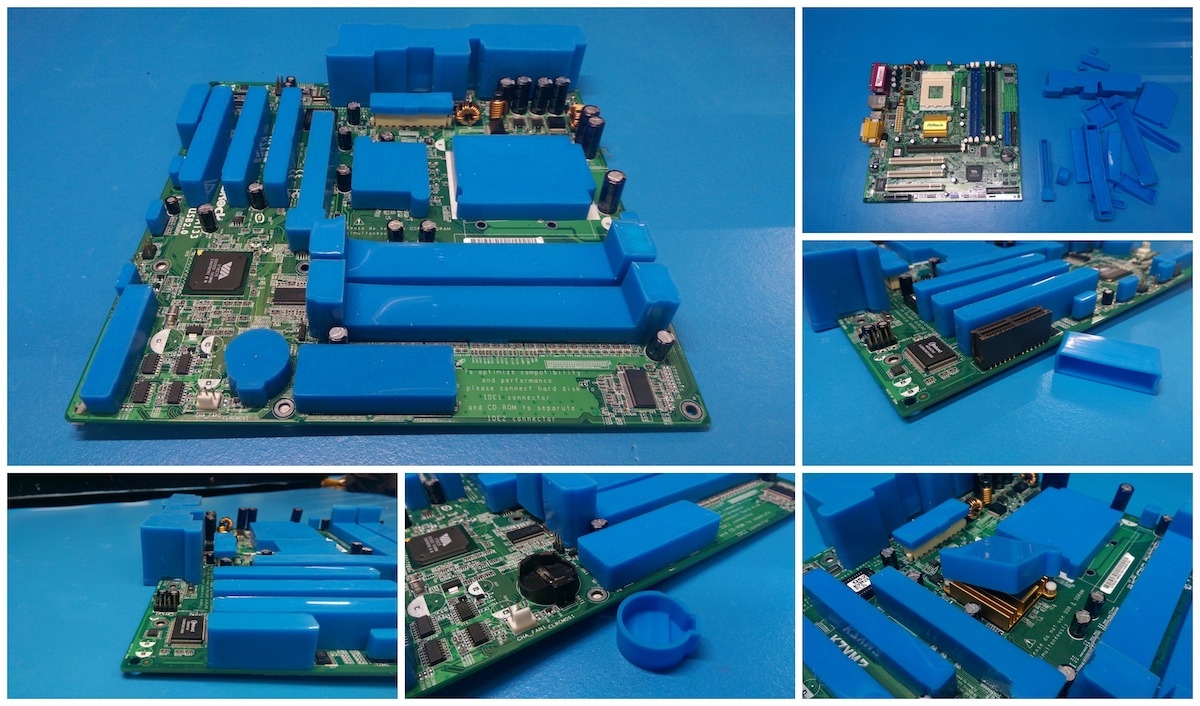 Our masking boots provide protection for many different types of components for all conformal coating application techniques. These processes include batch and selective robotic spraying (as an alternative to difficult technical programming), vertical and horizontal dipping and vapour deposition of coatings such as parylene.
Our masking boots provide protection for many different types of components for all conformal coating application techniques. These processes include batch and selective robotic spraying (as an alternative to difficult technical programming), vertical and horizontal dipping and vapour deposition of coatings such as parylene. -
How are conformal coating masking boots used?
They are used by applying them over the components such as connectors, plugs and sockets that require protection from the conformal coating applied. They can be simple boots that fit over the top of a connector or a more sophisticated design such as the examples below.
-
Why use conformal coating masking boots?
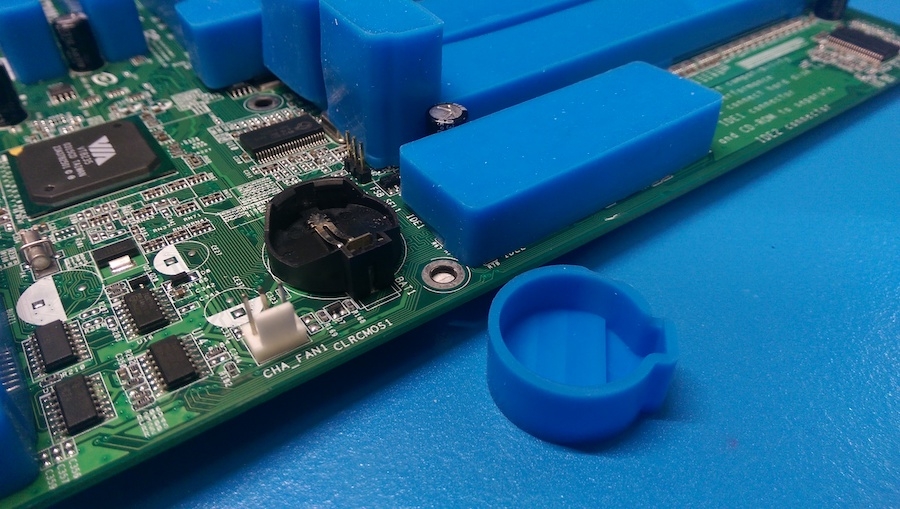 Masking boots are an integral part of a full masking solution in coating applications for printed circuit boards, whether this is for a liquid conformal coating process or a vapour deposition process such as parylene. Many components and printed circuit board locations must remain uncoated and the purpose of the conformal coating masking boots is to prevent migration of the conformal coatings into components and keep out areas. The use of masking tapes, dots and liquid latex is an effective process in protecting components from ingress of conformal coating. However, the application of the masking can be labour intensive, especially in higher volume applications. Therefore, masking boots can offer a labour saving alternative in both the masking and de-masking stages of the coating process.
Masking boots are an integral part of a full masking solution in coating applications for printed circuit boards, whether this is for a liquid conformal coating process or a vapour deposition process such as parylene. Many components and printed circuit board locations must remain uncoated and the purpose of the conformal coating masking boots is to prevent migration of the conformal coatings into components and keep out areas. The use of masking tapes, dots and liquid latex is an effective process in protecting components from ingress of conformal coating. However, the application of the masking can be labour intensive, especially in higher volume applications. Therefore, masking boots can offer a labour saving alternative in both the masking and de-masking stages of the coating process. -
What types of masking boots are available from SCH?
We can provide both standard and custom boots solutions for a customer depending on their needs. In the example below the boot fits around the connector providing an excellent shielding solution compared to masking tapes. We already have a wide range of custom boots and designs within stock or ready to manufacture. We can quickly match these to your needs. If this is not possible then we help develop a custom solution through our design services to help you get the protection you need in your conformal coating process. The key is to determine the best Return on Investment (ROI) when using masking boots for the customer for their particular application.
-
I would like some custom boots made. What do I do?
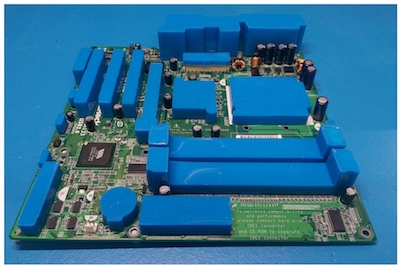 There are two realistic options for getting accurate quotes and designs made for custom boots. These are: 1. Supply a sample of the PCB along with a masking diagram so that we know what needs masking. 2. Supply photos of the PCB along with exact dimensions of the components. You can get this from the component supplier. With this information we will then check against stock and quote you a price. Please remember we want to get this right so we cannot guess. We will make the boots to a very high tolerance and need to get the measurements correct.
There are two realistic options for getting accurate quotes and designs made for custom boots. These are: 1. Supply a sample of the PCB along with a masking diagram so that we know what needs masking. 2. Supply photos of the PCB along with exact dimensions of the components. You can get this from the component supplier. With this information we will then check against stock and quote you a price. Please remember we want to get this right so we cannot guess. We will make the boots to a very high tolerance and need to get the measurements correct. -
What conformal coating materials can be used with the masking boots?
The masking boots are compatible with the full range of conformal coating materials and solvents including all of the parylene compositions and the liquid conformal coatings like acrylics, polyurethanes, silicones and epoxies. The boots are generally made of silicone rubber but alternative materials can be used depending on the application.
-
How often can we reuse the conformal coating masking boots?
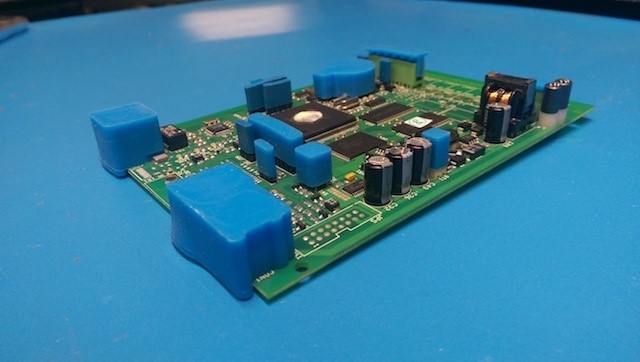 How often can we reuse the conformal coating masking boots? The number of times a boot is reusable is dependent on a number of factors including: 1. The conformal coating process 2. The complexity of the boot 3. The thickness of the wall of the boot 4. The conformal coating material used 5. How tight you require the boot to fit The conformal coating process If you require a tightly fitting gasket seal for processes like dipping or parylene coating you may not be able to use the boot more than 1-2 times. This is because the seal has to be perfect. But, for typical spray coating processes most boots can be reused 20-50 times. In fact, we have some boots that have never been replaced and still in use in our coating service that have probably been used over 400-500 times. They last a long time. The complexity of the boot The more complex the boot the more likely it will get damaged. A simple molex connector or cap box will be more durable than a three piece boot which is connected together purely down to operator handling. The thickness of the wall of the boot All of the boots are custom made so we can vary the thickness of the walls. However, the thinner we make them the more likely they will get damaged eventually. The balance to this as that if the walls are too thick you get shadowing effects around the component and it may not fit in around tightly packed PCBs. The conformal coating material used Some solvents could react with the silicone boot. In reality very few do and 99% of conformal coatings are perfectly fine with the boots. But, if in doubt, check. How tight you require the boot to fit If you want a tight fitting boot then it makes sense that the boot will stretch with use when pulled off and pushed on. If you don’t need it tight then we can design it this way. A boot used as a simple spray shield can be used multiple times. Molex boots can be used multiple times if for shielding but may wear over time if needing to be liquid tight when dipping or applying Parylene.
How often can we reuse the conformal coating masking boots? The number of times a boot is reusable is dependent on a number of factors including: 1. The conformal coating process 2. The complexity of the boot 3. The thickness of the wall of the boot 4. The conformal coating material used 5. How tight you require the boot to fit The conformal coating process If you require a tightly fitting gasket seal for processes like dipping or parylene coating you may not be able to use the boot more than 1-2 times. This is because the seal has to be perfect. But, for typical spray coating processes most boots can be reused 20-50 times. In fact, we have some boots that have never been replaced and still in use in our coating service that have probably been used over 400-500 times. They last a long time. The complexity of the boot The more complex the boot the more likely it will get damaged. A simple molex connector or cap box will be more durable than a three piece boot which is connected together purely down to operator handling. The thickness of the wall of the boot All of the boots are custom made so we can vary the thickness of the walls. However, the thinner we make them the more likely they will get damaged eventually. The balance to this as that if the walls are too thick you get shadowing effects around the component and it may not fit in around tightly packed PCBs. The conformal coating material used Some solvents could react with the silicone boot. In reality very few do and 99% of conformal coatings are perfectly fine with the boots. But, if in doubt, check. How tight you require the boot to fit If you want a tight fitting boot then it makes sense that the boot will stretch with use when pulled off and pushed on. If you don’t need it tight then we can design it this way. A boot used as a simple spray shield can be used multiple times. Molex boots can be used multiple times if for shielding but may wear over time if needing to be liquid tight when dipping or applying Parylene. -
What is the temperature limitation of the conformal coating masking boots?
200C since they are silicone.
-
How can a conformal coating masking boot leak?
They are completely leak proof if they are undamaged and not attacked by a very strong solvent or sharp item. The coating cannot go through the silicone wall. However, it can go under the boot and leak in that way but it is 100% sealed like the perfect masking tape process.
-
Is it easy to peel the boot off from the PCBA after the conformal coating and curing process and will there be an impact on the coating surface?
The masking boot itself should just lift off the component since it is not stuck to it. How easy depends on how tight it is has been designed to be and if it is an odd shape wrapped around the component. If a seal is created to the PCB with the coating you have the same issue as with tape where you have to pull it off and this may lift the coating. This can be minimised by designing the boot to not touch the base of the board if you wish.
-
How do I clean and maintain my conformal coating masking boot?
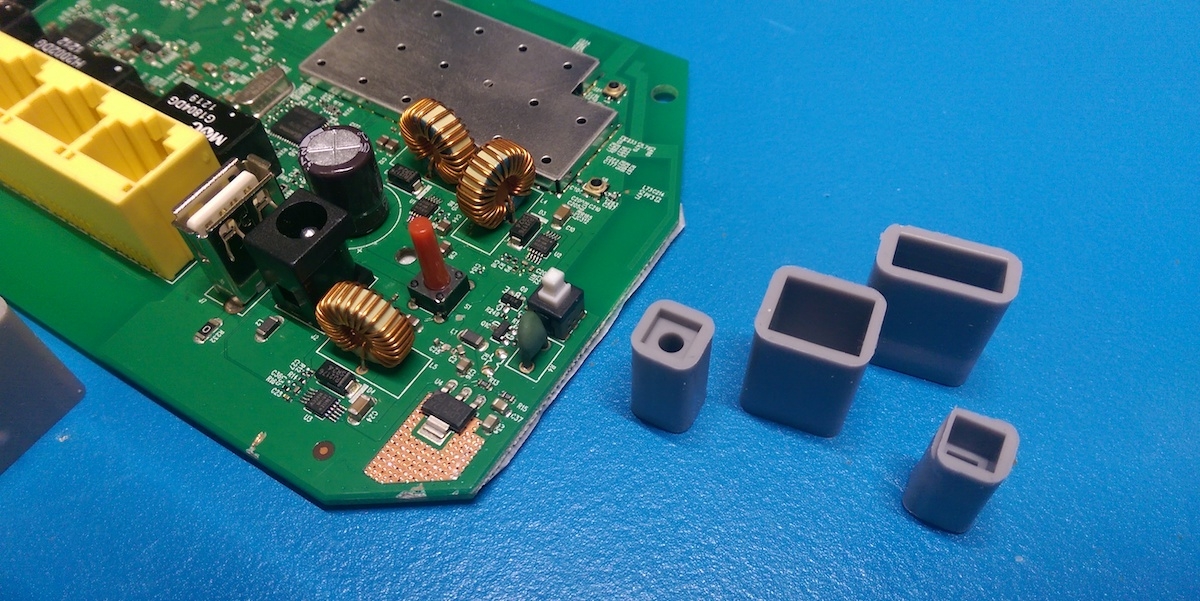 The masking boot material is a soft silicone so is very flexible. If you flex the boot, the conformal coating will crack and it is generally possible to peel or flake the coating away. This is the easiest method and what we do in our coating services.
The masking boot material is a soft silicone so is very flexible. If you flex the boot, the conformal coating will crack and it is generally possible to peel or flake the coating away. This is the easiest method and what we do in our coating services. -
What is the thickness of the masking boot walls?
Typical it is 1-2mm but we can customise to any thickness. Thicker ensures the boot lasts longer but it will cover more of the board and shield the area. We can discuss and change on a case by case basis.
-
Can a custom mark be added to the surface to make identification easier?
We can add in detail markings to help. As long as the marking can fit on the boot, cap or plug then there is no problem. Examples are shown below in the images.
Back to top

